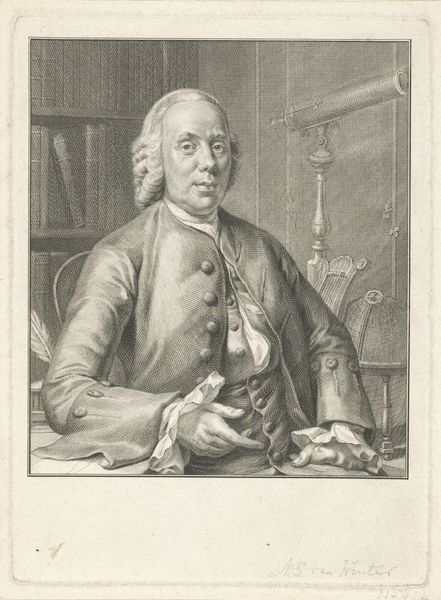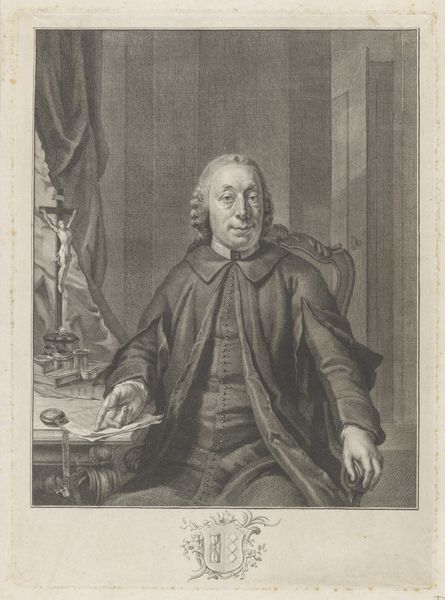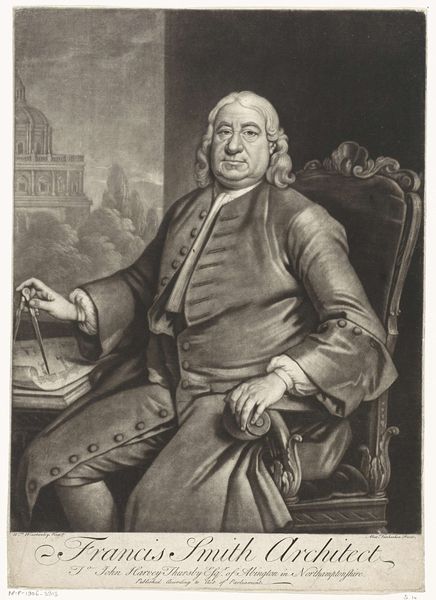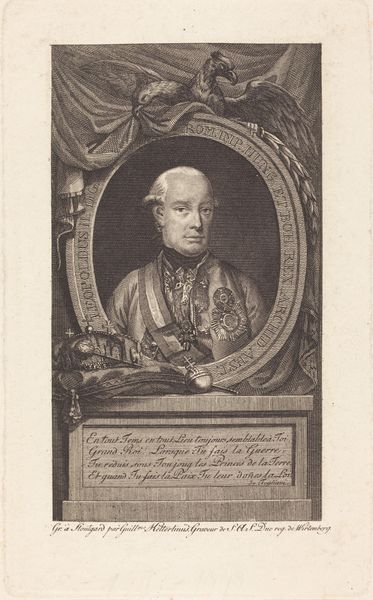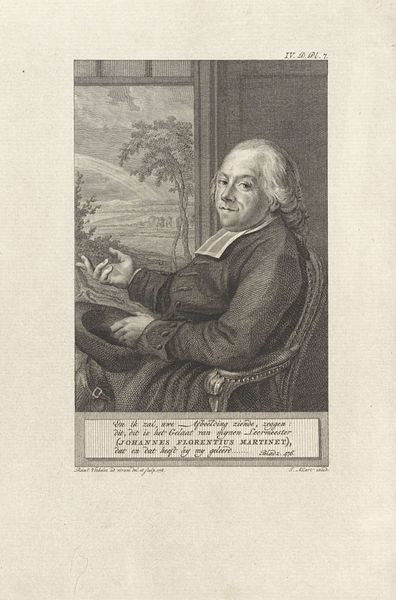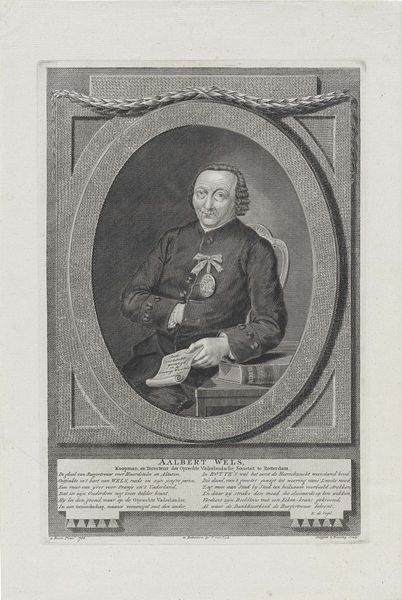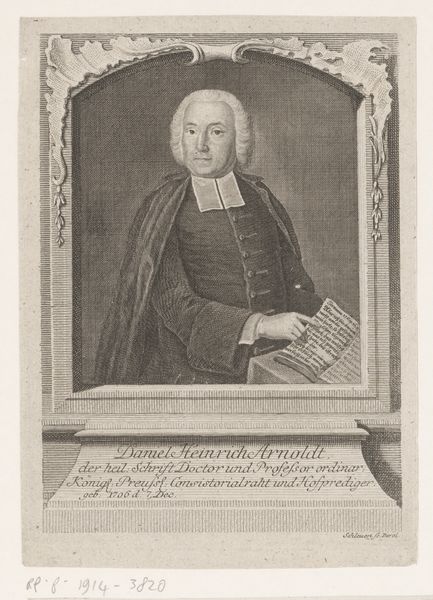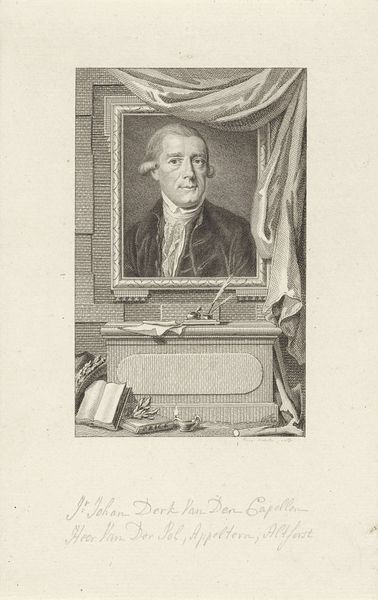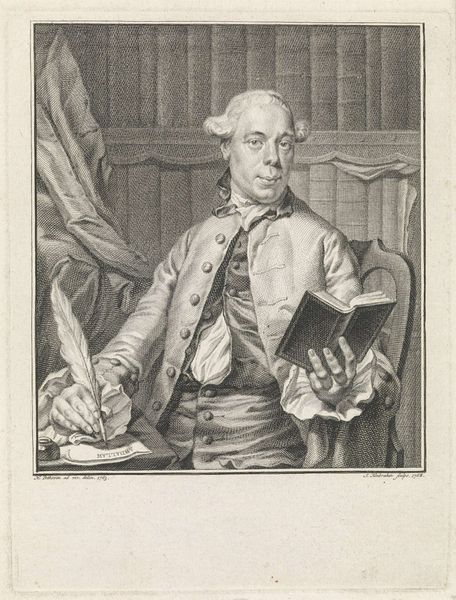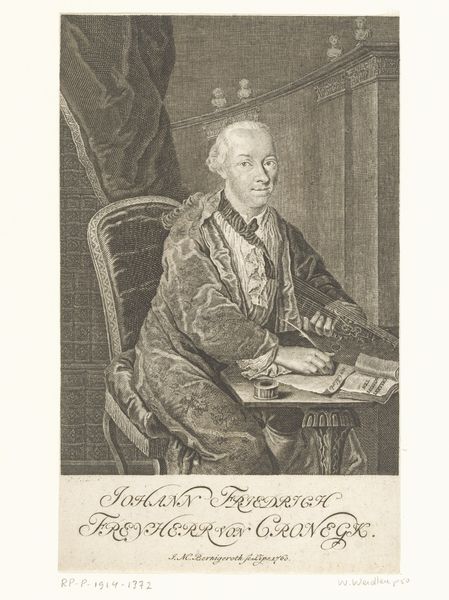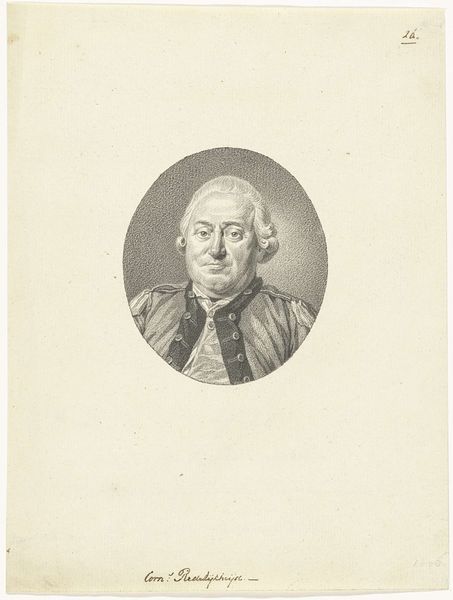
Dimensions: height 202 mm, width 150 mm
Copyright: Rijks Museum: Open Domain
Curator: This engraving, titled "Portret van Jan Kopper," was created in 1789 by Hendrik Roosing. The medium used was a pencil drawing, and subsequently an engraving. What strikes you first about this particular portrait? Editor: The man's direct gaze certainly holds the eye, and there’s a somewhat unsettling duality at play here, with this stern portrait juxtaposed with this meticulously crafted paper ship. The stark contrasts of the engraving highlight the sitter’s rather somber demeanor. Curator: Indeed. Roosing worked primarily as an engraver and printmaker, a career that necessitated a certain kind of detailed labor and the distribution of images through print culture. His portraits, like this one, played a key role in constructing the public identities of the bourgeoisie and scholars. This print was reproduced from an earlier work, a drawing of Jan Kopper made in 1773. Editor: Thinking about the formal elements, the figure dominates the frame, yet his presentation is less about individual flamboyance, and more about hinting at something deeper, perhaps something connected to his craft. This piece holds tension between being aesthetically alluring, through precise rendering, and emotionally distant. Curator: Absolutely, consider the material realities. Kopper likely paid for this print to be made to advertise his trade. He was known for creating paper cut outs and elaborate paper designs that, at the time, mimicked higher end trades such as metal works. Here he literally holds the tools of his trade while attempting to rise in status, something very novel and subversive at the time. Editor: And consider the placement of that tiny ship in his hand—it draws us in, almost as an extension of himself and his skill, inviting a symbolic voyage into his character and craft. The rest of the image, the table with various cutting tools, also allude to the technicality of his method. The image's graphic nature also brings to mind Dutch Golden Age paintings in the hyperrealist rendering of still-life items. Curator: Which perhaps reminds us how Roosing’s craft allowed for the reproduction of Kopper’s image across many contexts, embedding his skills within broader societal narratives about artistry and commerce. Editor: I agree; both Kopper and Roosing were acutely aware of how image and accessibility worked together to communicate, which they achieved effectively using sophisticated visual language, skillful composition, and meticulous craftsmanship.
Comments
No comments
Be the first to comment and join the conversation on the ultimate creative platform.
